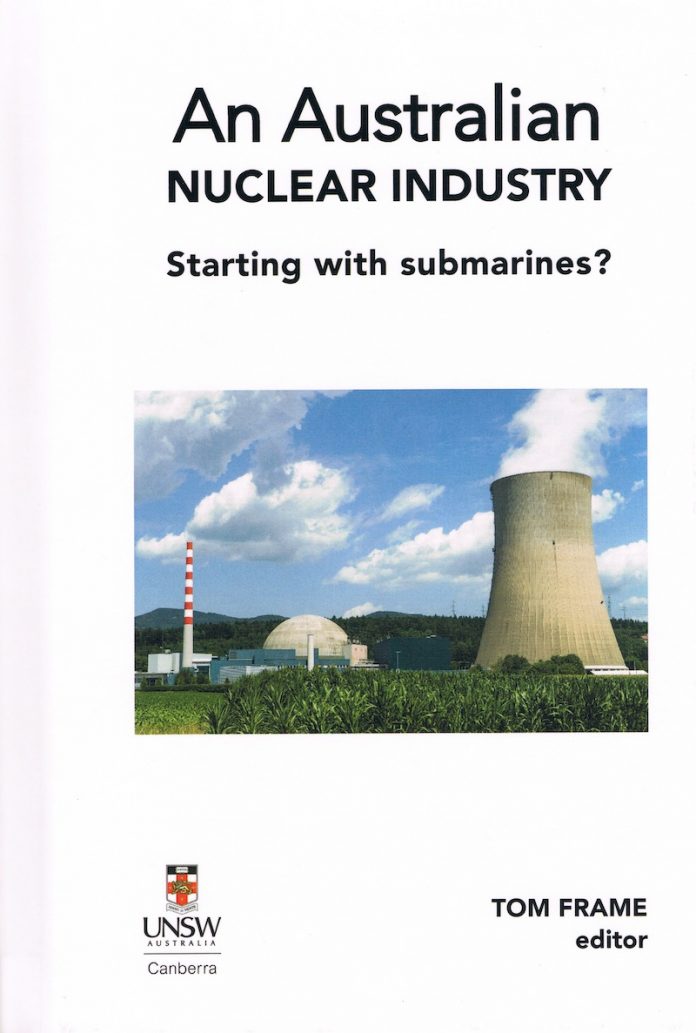
An Australian Nuclear Industry: Starting with submarines? Edited by Tom Frame. Published by Connor Court Publishing – www.connorcourtpublishing.com.au . ISBN 9781922449382. 2020.
Reviewed by Peter Jones
In October 2019, the Submarine Institute of Australia (SIA) and the University of NSW, hosted a seminar in Canberra, aiming to stimulate national discussion on a nuclear industry. This event explored both the merits of nuclear power for submarines and as well as for civil power generation.
An Australian Nuclear Industry: Starting with submarines? is edited by Professor Tom Frame and is derived by these proceedings. The book contains a dozen chapters by scientists, engineers, politicians, naval officers and academics.
The presenters are mostly proponents of nuclear power for both naval and civic application. But this does not detract from the book. Their arguments and supporting data are informative and thought provoking. As the SIA President, Commodore Mark Sander states in the Preface: “The aim of this book is ensuring we are asking not just the right questions but the best questions of how the Australian Government should protect its people and promote its interests.” Very usefully Tom Frame gives a historic overview of the vexed issue of nuclear power in Australia which sets the scene for the following chapters.
In terms of the use of nuclear energy for civil power production Tony Irwin’s chapter on small modular reactors (SNR) illustrates the future of the international nuclear power production. But as was mentioned at the seminar the attraction of these impressive new technologies depends on where each country is starting from. For a country such as France, with a high reliance of nuclear power, SNRs are the logical next step. For Australia it remains an open question.
The data on the relative costs of nuclear, coal, gas and renewables are presented in several chapters but, not unreasonably, there is no clear-cut deduction. The costs of renewables are rapidly changing, the through-life costs of nuclear (including decommissioning costs) are uncertain and the potential of hydrogen is unclear. Importantly, several chapters discuss the costs of modernising the national grid, but once again the costs are unclear. However, Stephen Wilson’s chapter on the energy market sheds much light on the subject.
In terms of nuclear power for submarines, Commodore Denis Mole’s chapter provides an excellent exposition on the capability differences between nuclear and diesel-electric propelled submarines. In his paper Denis states, “Nuclear submarines can be highly effective in open ocean or focal points, whereas conventional submarines are relatively effective only in focal points.” The key question, in considering whether to opt for nuclear submarines, must be “how important is it for our submarines to operate in the open ocean and how much is that worth to do that?”
The SIA intends to hold another seminar to progress this topic later this year (COVID allowing). They are to be commended for this most informative primer on the subject and for the seminars themselves.



